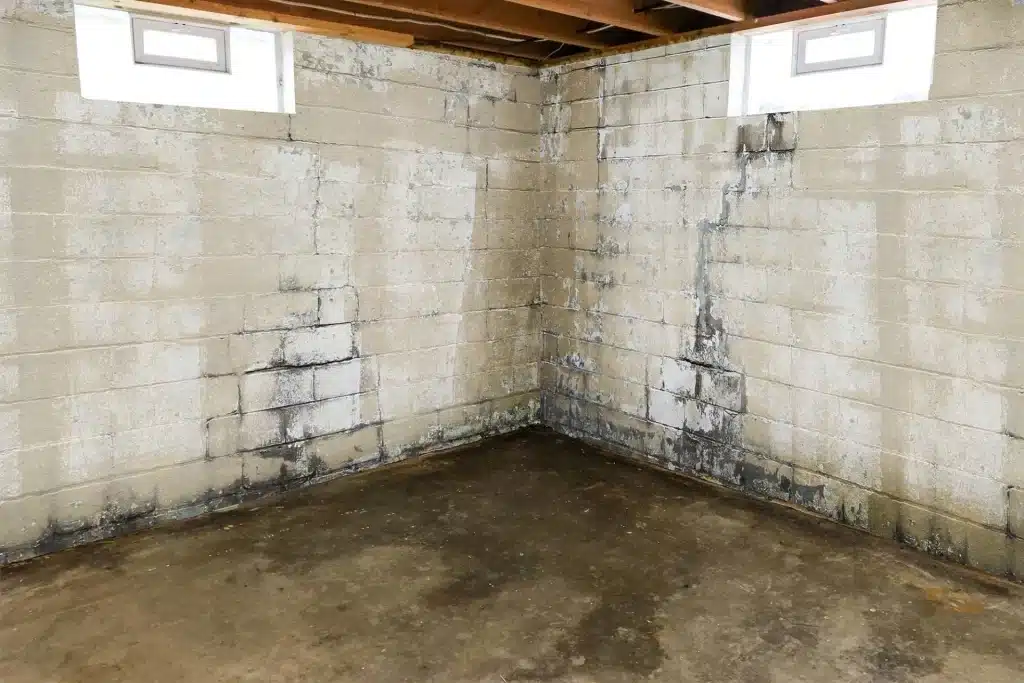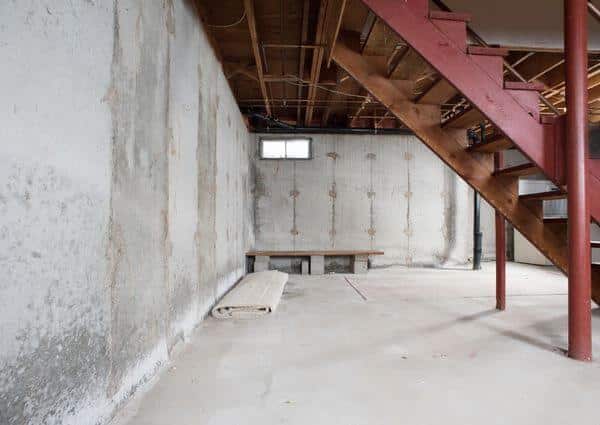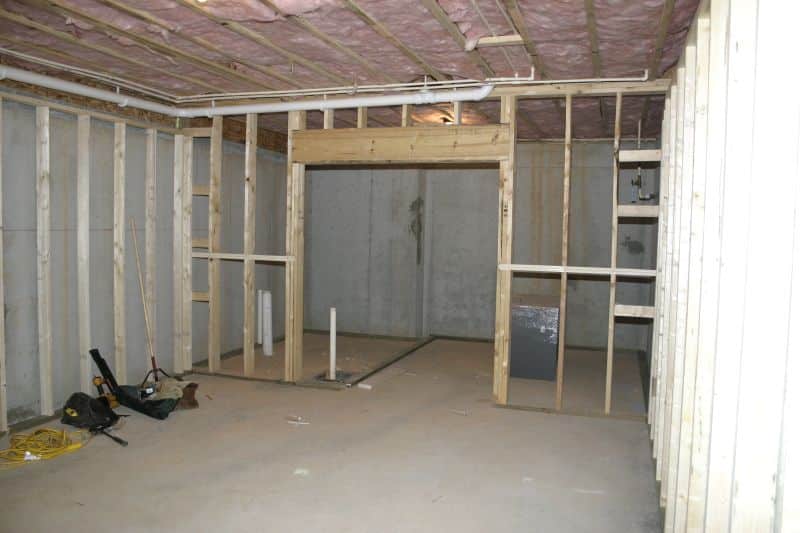Basements are a common part of many homes, but they often face challenges related to dampness and water infiltration. Damp basement walls are not only inconvenient but can also lead to severe issues like mold growth, structural damage, and a decrease in the value of your home. In this article, we will explore the various solutions available to tackle the problem of damp basement walls. We have researched and gathered insights from experts to provide you with a comprehensive guide to keeping your basement dry.
Understanding The Problem

Damp basement walls are primarily caused by excess water, which can be either underground or surface water. To effectively address this issue, you need to consider several solutions:
- Apply Masonry Waterproofer
- Reduce Seepage Around the Basement
- Seal Outside the Foundation Wall
- Fill Large Cracks in Foundation Walls
- Install a Sump Pump
Let’s delve into each of these solutions and identify the circumstances in which they are most applicable.
- Apply Masonry Waterproofer
To prevent water from seeping into your basement walls, consider using a masonry waterproofer. Masonry waterproofers contain latex, which creates an impermeable barrier when applied to your walls. Experts recommend applying a thin layer, allowing it to penetrate the wall’s pores and expand as it dries. After 24 hours, apply a second coat for added protection.
- Reduce Seepage Around the Basement
If you notice seepage around the top portion of your basement walls, investigate potential sources of the issue, such as leaking pipes, yard flooding, or increased groundwater. Address these problems by repairing burst pipes, cleaning clogged sump pumps, and ensuring your basement’s windows are properly sealed.
For seepage at the bottom of your basement wall, the issue may be poor drainage of underground water. By addressing these concerns, you can effectively mitigate dampness in your basement.
- Seal Outside the Foundation Wall
During heavy rains, water can infiltrate your basement walls from the outside. Pooled water around the foundation can find its way in through the basement walls. To combat this, it’s essential to waterproof the foundation from the exterior.
The process involves cleaning the foundation’s perimeter, excavating the footer, installing drainage systems like gravel, perforated pipes, or French drains, sealing the walls with liquid rubber, and then directing the water away, either to daylight or a sump pump.
- Fill Large Cracks in Foundation Walls
Cracks in your basement walls provide a pathway for surface water and groundwater, resulting in damp walls. Repairing these cracks is crucial to resolving the issue. Start by widening the cracks for easier filling, and remove any deteriorating material using a cold chisel. Then, fill the cracks with foam and mortar, incorporating an acrylic bonding agent for improved adhesion.
- Install a Sump Pump
A sump pump is an excellent solution for homeowners experiencing persistent issues with their basement walls. These pumps effectively drain water to a nearby storm drain or detention pond, preventing basement flooding and keeping the walls dry. You can either install a sump pump yourself or seek professional assistance.
The Importance Of Keeping Basement Walls Dry

Damp and moist basements are not ideal, as they can lead to mold and mildew growth, exacerbating allergies and asthma, and reducing your home’s value. Therefore, maintaining dry basement walls is essential to ensure a healthy and valuable living space.
Diagnosing The Water Problem
Before you proceed with basement wall repairs, it’s essential to identify the source of the moisture. To determine whether the issue originates from inside or outside the house, conduct a simple test:
Tape aluminum foil to the wall using duct tape and leave it in place for 24 hours or longer. If moisture is present beneath the foil, the issue is external, indicating water penetration through porous walls or cracks. In such cases, a comprehensive solution is required.
Conversely, if the moisture is on top of the aluminum foil, the problem likely stems from high indoor humidity. Addressing indoor humidity is less complex and can be achieved through simple measures.
How To Dry Moisture On Basement Walls
Excessive humidity in basements can accelerate deterioration and affect your home’s value. To combat this issue and prevent further damage, consider the following solutions:
- Insulate basement pipes.
- Promote airflow by opening windows and using fans.
- Insulate basement walls.
- Utilize a dehumidifier, especially in finished basement bathrooms.
- Increase heating to create a warm pocket of air in the basement.
- Extend gutters and downspouts.
- Install a high-quality HVAC system professionally.
These cost-effective measures will not only save you money but also make your basement a more usable and pleasant space.
The Risks Of A Damp Basement
No amount of water in the basement is acceptable, as it can lead to increased humidity throughout the house, overwork your HVAC system, and result in higher energy bills. Before buying a home or constructing a basement, it’s essential to assess the area’s water table and consider professional land surveyors for accurate information.
Ways To Keep Basements Dry Without A Humidifier
Dehumidifiers can be costly in rented basement apartments. However, you can take steps to reduce humidity without the need for an expensive appliance:
- Use charcoal or crystal salt to absorb moisture.
- Avoid hot, steamy showers and opt for cooler ones.
- Promote airflow by opening windows or using fans.
- Invest in affordable air conditioners to enhance ventilation.
- Dry clothes outdoors instead of using a dryer.
These strategies allow you to effectively dehumidify your basement without relying on electricity-consuming devices.
Covering Basement Walls
Once you’ve thoroughly waterproofed your basement, you may want to consider different finishes for the walls. Here are several options, ranging from economical to high-end, that can complement your interior decor:

- Drywall
- Shiplap
- Paints or stains with a primer
- Fiberboard wood paneling
- Stone veneer
- Brick veneer
- Paige coat or plaster
- Wall fabric
- Tile
- Wall vinyl
- Stone slabs
- Shelves and cabinets
Conclusion
Addressing damp basement walls is essential for maintaining a healthy and valuable living space. Before you embark on any repair or waterproofing project, it’s crucial to diagnose the source of the issue and choose the appropriate solution. While homeowners can tackle some problems themselves, more severe issues may require professional assistance. By keeping your basement dry, you can ensure a comfortable and mold-free environment while safeguarding your home’s value.






GIPHY App Key not set. Please check settings